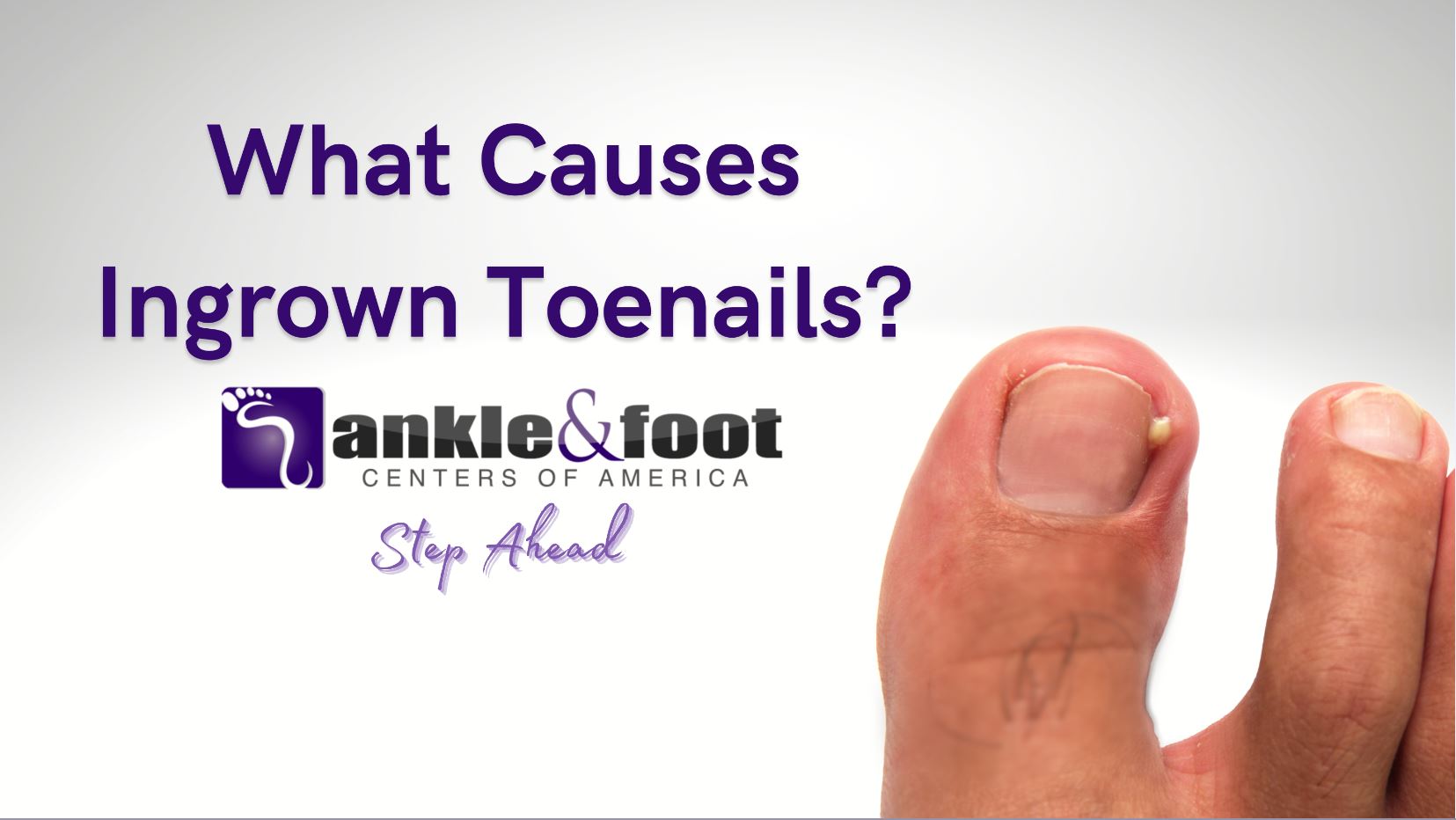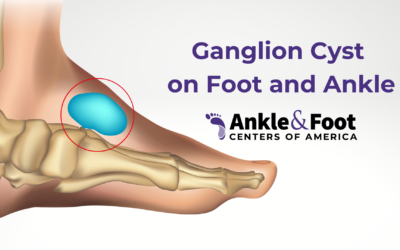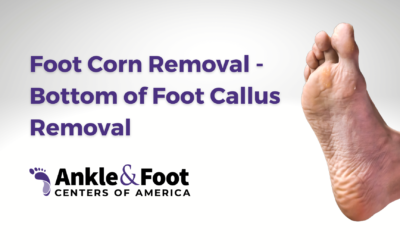What is an Ingrown Toenail?
An ingrown toenail is a condition that occurs when the corner of a toenail starts to grow downwards into the skin, and in severe cases they can break the skin and cause infection. The most common ingrown toenail occurrences typically affect the big toe. While anybody can get ingrown toenails, people who have diabetes, neuropathy, or poor blood circulation, may be at a higher risk. Ingrown toenails are also common in adolescents and athletes. Ingrown toenails are a common foot problem, but they can lead to greater issues if they are not treated properly.
How can you diagnose an Ingrown Toenail?
 You may be able to self-diagnose an ingrown at home. It is, however, highly recommended to see your local podiatrist if you believe you are experiencing an ingrown toenail to avoid infection and to get the proper treatment. If your toenail is growing into the skin or the skin is growing over your nail, you should go see a foot doctor to learn how to remove an ingrown toenail permanently. A more severe or infected ingrown may cause severe pain, darkening of the toe, a hot or burning sensation in the toe, swelling of the toe, or pus oozing from the toe.
You may be able to self-diagnose an ingrown at home. It is, however, highly recommended to see your local podiatrist if you believe you are experiencing an ingrown toenail to avoid infection and to get the proper treatment. If your toenail is growing into the skin or the skin is growing over your nail, you should go see a foot doctor to learn how to remove an ingrown toenail permanently. A more severe or infected ingrown may cause severe pain, darkening of the toe, a hot or burning sensation in the toe, swelling of the toe, or pus oozing from the toe.
Ways to prevent Ingrown Toenails?
There are a couple things you can do at home to prevent ingrown toenails from taking place:
- Try to avoid cutting your nails too short and only cut across the top of your nails, do not cut the corners. Do not tear your toenails and always clean your nail trimmer to avoid infections.
- Wear shoes that fit your feet correctly, too much room or not enough room around your toes can cause ingrown toenails.
- Avoid overuse while preforming certain stop and go sports or activities like tennis, for example. This on and off pressure between your toes and shoes can lead to ingrown toenails.
A permanent Solution for Ingrown Toenails
 Your podiatrist may recommend ingrown toenail surgery if you are a diabetic or have reoccurring ingrown toenails. There are two type of in- office surgeries that are considered the most permanent solutions for ingrown toenails: a partial toenail removal or a total toenail removal. These are also known as Nail Avulsion and Chemical Matrixectomy. These procedures are rather simple and have a very quick recovery time.
Your podiatrist may recommend ingrown toenail surgery if you are a diabetic or have reoccurring ingrown toenails. There are two type of in- office surgeries that are considered the most permanent solutions for ingrown toenails: a partial toenail removal or a total toenail removal. These are also known as Nail Avulsion and Chemical Matrixectomy. These procedures are rather simple and have a very quick recovery time.
For less severe ingrown toenails (only one corner is ingrown) your podiatrist will perform a partial removal. They will begin by using an anesthetic to numb the toe. In some circumstances they will place a wedge under the ingrown toenail to hold it above the skin. Once the site is prepared your doctor will use a tool to separate the bed and the toenail. The will make a vertical cut in the nail, down to the cuticle and remove that portion of the nail. This part of the process is the Nail Avulsion. Secondly, they will add a substance to disrupt the nail bed that your nail grows from, this is the Chemical Matrixectomy portion of the procedure. This will stop any bleeding and usually stops regrowth.
A more severe ingrown toenail, if both sides are ingrown for example, then a doctor may perform a full removal. In this case they would repeat all the same steps that took place in a partial but they would cut and remove the entire nail.
After care for a Permanent Ingrown Toenail Removal
- For 24 to 48 hours you should keep your foot elevated and limit its use.
- Your podiatrist will give you instructions to prevent infections.
- You may take OTC pain relievers or prescribed oral antibiotics in some cases.
- For two weeks after surgery wear loose- fitting shoes.
- Clean your surgery site clean with warm, soapy water, and dry it completely.
- Keep your dressing clean
After a partial ingrown surgery, your toenail maybe take up to 4months to grow back and after a full ingrown surgery, it could take the toenail a full year to grow back. If your nail does grow back, it would typically grow back thinner than before. It is also possible that it may not grow back at all. In uncommon cases, your toenail could grow back curved downward and become ingrown again. The full recovery time after and ingrown toenail procedure is 2 weeks, but you can return to work or school 24 hours after the procedure.
A Home Remedy
For less severe ingrown toenails you may be able to use this home remedy to ease the discomfort and treat the toenail:
Soak your toe in warm water to soften the nail. It is recommended to use Epsom salt water for the soak, as it is good at bringing down inflammation and pain.
Dry your foot and toe off, and gently lift the toenail away from the skin using a clean, straight splitter.
Once the toenail is lifted from the skin you can apply an antibiotic ointment and take over the counter pain relievers to reduce the swelling and the pain.
Reach out to your local podiatrist, as it is recommended to visit a foot specialist no matter what the severity of your ingrown is.
No home remedy is guaranteed to get rid of your ingrown toenail permanently.
Conclusion
It is highly recommended to visit your local doctor if you believe you have an ingrown toenail to avoid infections and other difficulties that can arise. The most effective and permanent way to deal with an ingrown toenail or chronic ingrown toenails is to visit your Nashville podiatrist and have an ingrown toenail removal procedure performed.





